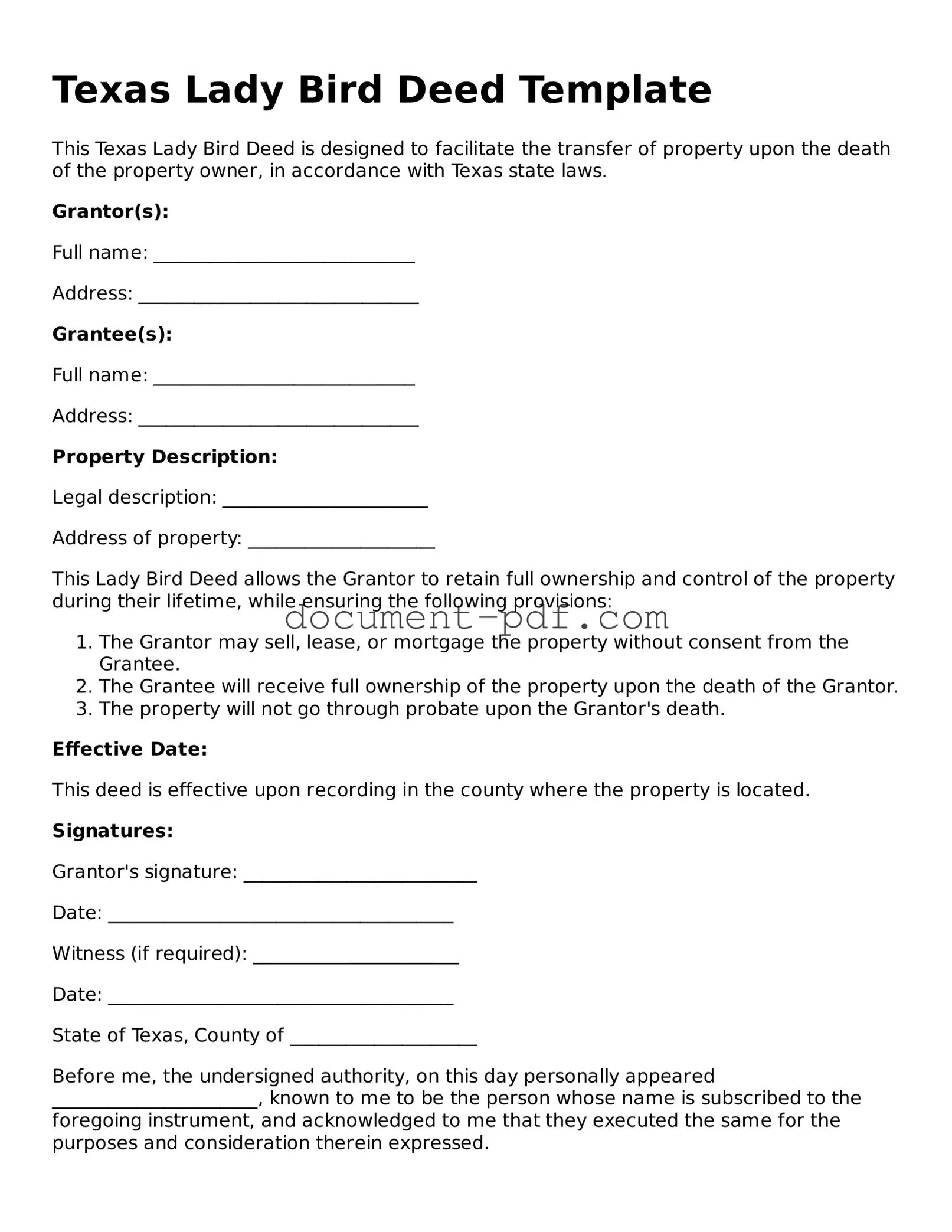Texas Lady Bird Deed Template
This Texas Lady Bird Deed is designed to facilitate the transfer of property upon the death of the property owner, in accordance with Texas state laws.
Grantor(s):
Full name: ____________________________
Address: ______________________________
Grantee(s):
Full name: ____________________________
Address: ______________________________
Property Description:
Legal description: ______________________
Address of property: ____________________
This Lady Bird Deed allows the Grantor to retain full ownership and control of the property during their lifetime, while ensuring the following provisions:
- The Grantor may sell, lease, or mortgage the property without consent from the Grantee.
- The Grantee will receive full ownership of the property upon the death of the Grantor.
- The property will not go through probate upon the Grantor's death.
Effective Date:
This deed is effective upon recording in the county where the property is located.
Signatures:
Grantor's signature: _________________________
Date: _____________________________________
Witness (if required): ______________________
Date: _____________________________________
State of Texas, County of ____________________
Before me, the undersigned authority, on this day personally appeared ______________________, known to me to be the person whose name is subscribed to the foregoing instrument, and acknowledged to me that they executed the same for the purposes and consideration therein expressed.
Given under my hand and seal of office this ____ day of _____________, 20__.
Notary Public Signature: ____________________________
My commission expires: ____________________________
